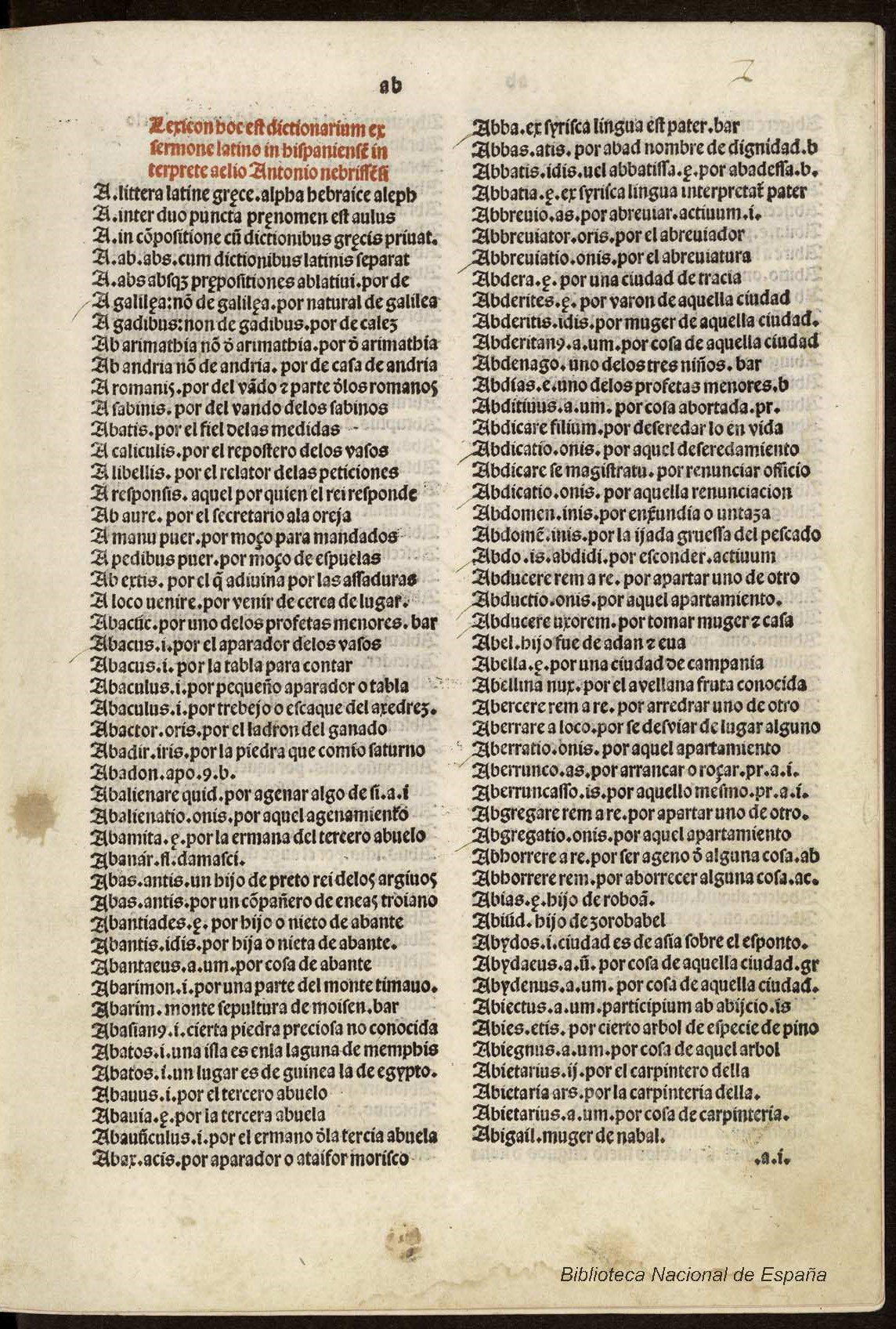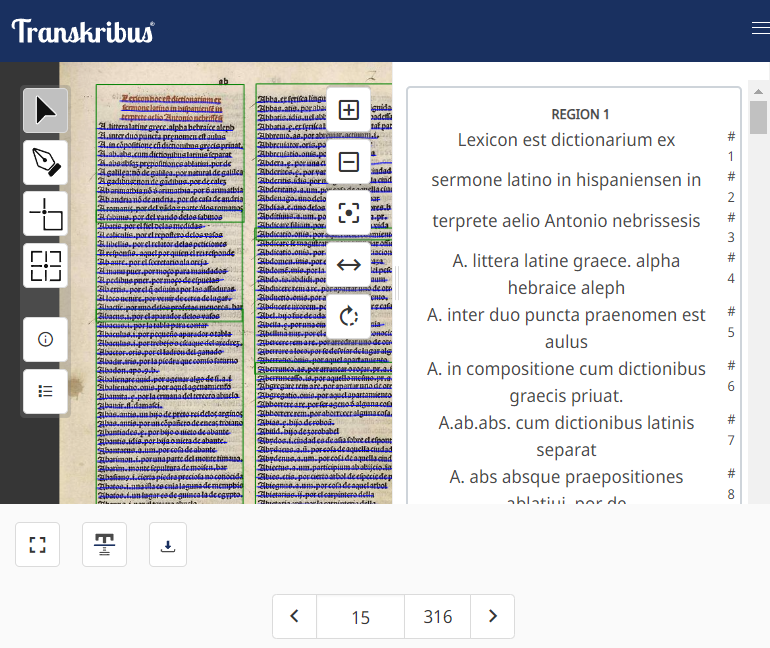


The following project describes the attempt to make a contribution to the book history field through the use of digital tools and the application of AI on two of Nebrija’s most spreaded works: Grammatici Lexicon ex sermone latino in hispaniensem, also known as Dictionarium Latino-Hispanicum or Lexicon of 1492, and the Grammatici dictionarium hispanarum in latinum, also known as Diccionario hispano-latino or Vocabulario of 1494.
The main purpose of this project was to define the exact number of entries in the princeps editions of the dictionaries and to explain why the lemmas of the second edition should not be admitted as the final version of the dictionary that Nebrija set for posterity over the princeps’ ones. To reach these goals, this project describes how the use of Transcribus and Python not only increased the capacity to extract more accurate data from digitized versions of the dictionaries but also how it allowed to enhance the accuracy in tasks such as counting lemmas and modernizing outputs. Then the reader delves into the typographics errors found in the dictionaries and the issues related to the use of letter ‘u’ and ‘v’ in the editions of the Vocabulario, before reaching the conclusions of this research exercise.
The process of analysis and manipulation of the corpora produced a digital corpus that became the essential material for the creation of this online dictionary that offers quick and easy access to the content inside the dictionaries. This new version of Nebrija's dictionaries in the digital era was built to highlight the Humanist’s role in the creation of modern dictionaries and to become a useful tool for future research concerning his lexicographic work.
During the last decade of the 15th century, Aelio Antonio de Nebrija published two dictionaries that became the foundations of modern lexicography and the first step for the standardization of vulgar languages in Europe.
The first dictionary, printed in 1492 in Salamanca, is Lexicon ex sermone latino in hispaniensem, also known as the Lexicon, and it was conceived by the author as a tool to help those who were interested in learning Latin out of curiosity to better understand the language.
The second dictionary, Dictionarium hispanarum in latinum, printed in Salamanca circa 1494, was an innovative work that completed the task started with Grammatica Castellana in 1492: the regulation of the language not only in grammar but also in lexical terms.
Both dictionaries contain a higher number of entries if compared with similar works of the time, words that do not belong to canonical authors were not included in the list and, one of the most important characteristic, the equivalent for each word is given in the simplest way possible avoiding the medieval long explanations.

